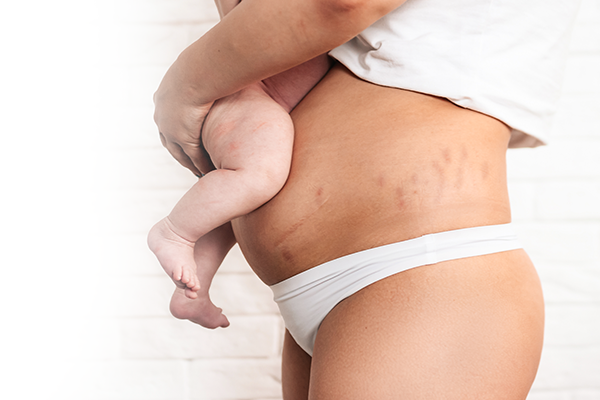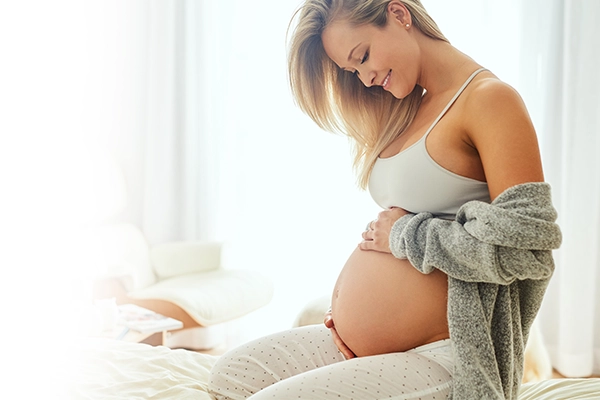Recently, it has become increasingly common for women to compare themselves to idealized photos available on social media. A hypocritical picture is being created of what a woman looks like after 9 months of pregnancy and after the birth of a child. However, despite appearances, many women complain of a long-lasting postpartum belly. How long does it take to get back to the pre-pregnancy state and what are the causes of "postpartum belly"?
What affects belly size after pregnancy?
The obvious point for everyone is that every pregnant woman gains weight during pregnancy. The weight of the mother-to-be is affected by the uterus enlarging with the baby, fetal waters, increased volume of circulating blood and body fat in the woman’s body. In addition, how much weight she will weigh depends not only on how she eats during pregnancy, but also on her BMI before pregnancy. Women who are overweight or obese during pregnancy should gain less weight than those who are very thin. In a twin pregnancy, the mother-to-be gains up to 20 kilograms. This is a completely individual issue.
Several factors affect the size of the belly after pregnancy. One of them is the aforementioned fat growth during pregnancy. In addition, there is a weakening of the rectus abdominis muscles and a number of hormonal changes taking place during pregnancy, as well as after delivery. Genetic factors also play an undeniable role in the persistence of increased abdominal girth after childbirth. Of great importance is whether a woman was physically active before and during pregnancy. For this reason, each mother returns to her pre-pregnancy form at her own pace, and one should not suggest what it looks like to other moms.
What abdominal exercises are safe after childbirth?
It is important to remember that during the postpartum period, that is, for the first 6-8 weeks after delivery, you should not exercise. It is safe and possible to practice sports only after approval from the attending physician or physiotherapist. This is because returning to exercise too soon can lead to a separation of the rectus abdominis muscles and prolong postpartum recovery. However, it is important not to give up daily activities such as walking, as lack of exercise after childbirth promotes thromboembolic complications.
It is best to consult a physiotherapist or urogynecological physiotherapist, who will suggest simple and safe exercises to speed up the return to pre-pregnancy activity. He will also pay attention to the exercise of the pelvic floor muscles (known as Kegel), which become relaxed after pregnancy and childbirth.Even if a woman was very active before pregnancy, after the postpartum, it is necessary to slowly and calmly introduce more exercises, and do not expose your body to maximum effort.
How long does it take to return to the pre-pregnancy state?
At what rate a woman returns to her pre-pregnancy form largely depends on genetic tendencies and is always an individual issue for each pregnancy. For this reason, the return to the pre-pregnancy state in the same woman may be different after each subsequent birth. The most weight is lost immediately after childbirth. Body weight decreases due to the birth of the baby, the placenta and fetal membranes, and the shrinking of the uterus. However, many women are surprised to learn that in the days following childbirth, their belly still looks like it did during pregnancy. This is normal and related to the gradual shrinking of the uterus. Some women lose all the extra weight during the 8 weeks of postpartum, while for others it sometimes takes more than a year to return to their pre-pregnancy figure.
The most important thing is not to compare ourselves to celebrities or colleagues, because a very big role in returning to the former figure is played by genes, over which we have no control. However, if a woman is uncomfortable with her body, it is worth talking to a nutritionist and a physical therapist who specialize in safely returning to her pre-pregnancy figure. It is also important to eat a well-balanced diet and, if possible, to be physically active on a regular basis. The recommendations are about 150 minutes a week, or, for example, 30 minutes of brisk walking 5 days a week. Both pregnant and breastfeeding women are advised against weight-loss diets, as it can have negative effects on the baby.
Rate this article:











